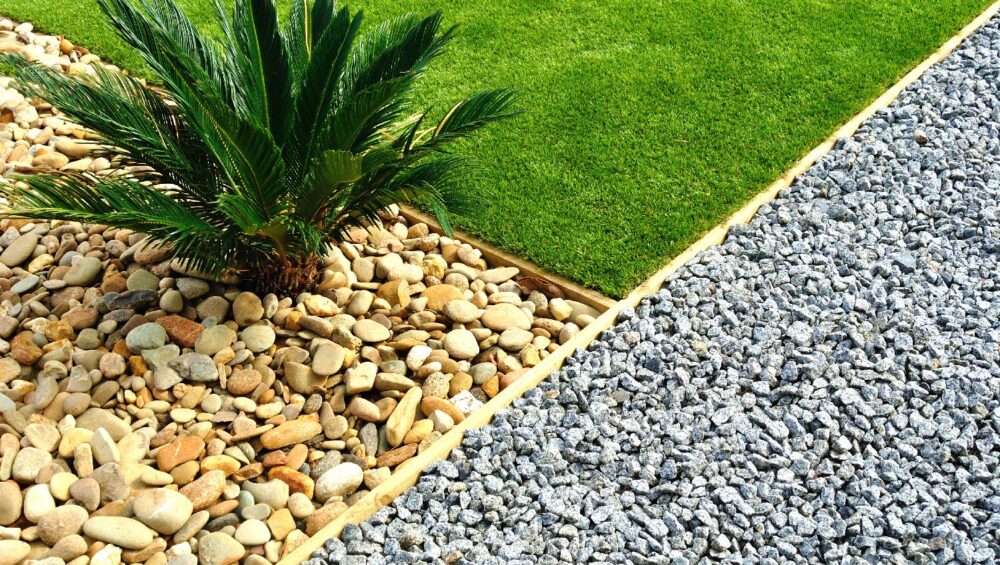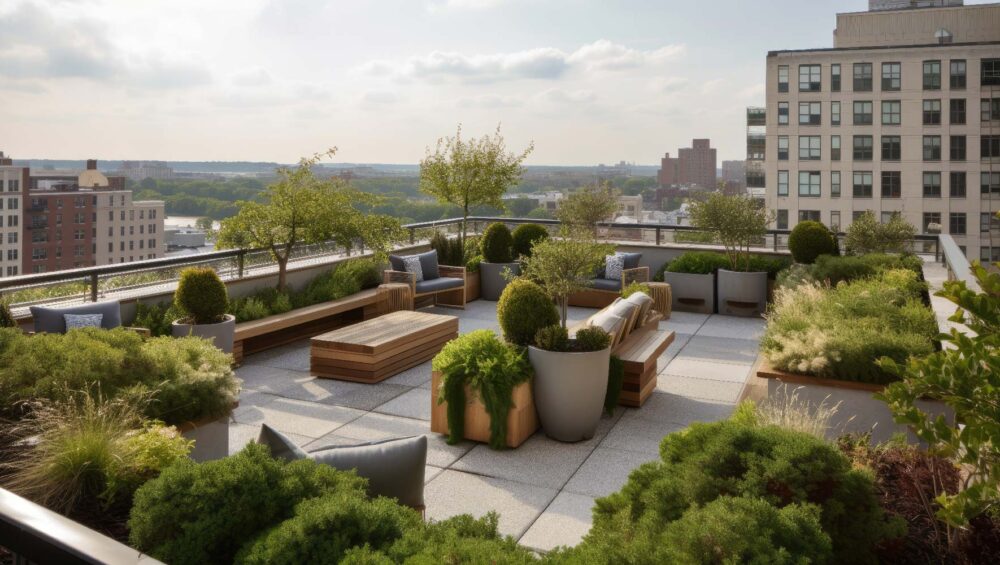When it comes to landscaping, stone is often an overlooked hero that can transform your outdoor space into a stunning oasis. Bring a natural look that offers a myriad of benefits when used in landscaping beds. In addition to elevating your landscape design creating variety, there are many benefits to the use of stone over other materials including:
- Durability and Longevity
- Excellent Drainage
- Weed Suppression:
- Incredible color variety
- Low Environmental Impact:
One of the most significant benefits of using stone and rock in landscaping beds is their exceptional durability and longevity. Unlike organic materials that decompose over time, stone and rock retain their structural integrity, ensuring that your landscape beds will stand the test of time. They are resistant to weathering, erosion, and pests, making them low-maintenance options for long-term landscape design. By incorporating stone and rock into your beds, you can create landscapes that remain beautiful and functional for years to come.
Proper drainage is crucial for maintaining healthy plants and preventing water-related issues. Stone and rock excel in promoting efficient water drainage within landscaping beds. Their porous nature allows water to infiltrate the soil, preventing excess moisture buildup that can lead to root rot and other plant diseases. By improving soil drainage, stone and rock help create a healthy growing environment, ensuring the longevity and vitality of your plants.
Say goodbye to endless weeding sessions! Stone and rock serve as effective barriers against weed growth in landscaping beds. Their non-organic composition forms a protective layer that inhibits weed germination and growth. This means less time spent battling unwanted vegetation and more time enjoying your beautiful landscape. By incorporating stone and rock, you can significantly reduce the need for chemical herbicides and minimize the effort required to maintain weed-free beds.
Using stone and rock in landscaping beds is an environmentally friendly choice. Unlike synthetic materials, they are sourced naturally and do not release harmful chemicals into the environment. By opting for these sustainable options, you contribute to the preservation of natural resources and reduce your carbon footprint. Furthermore, stone and rock require minimal water and maintenance, making them a water-wise and eco-conscious landscaping solution.
Integrating stone and rock into your landscaping can allow you to reap the benefits of their durability and excellent drainage properties along with weed suppression and design versatility. These natural elements offer a compelling case for enhancing your outdoor space. Embrace the power of stone and rock in your landscape design, and unlock a world of beauty, functionality, and sustainability that will transform your backyard into an enchanting haven for years to come.

